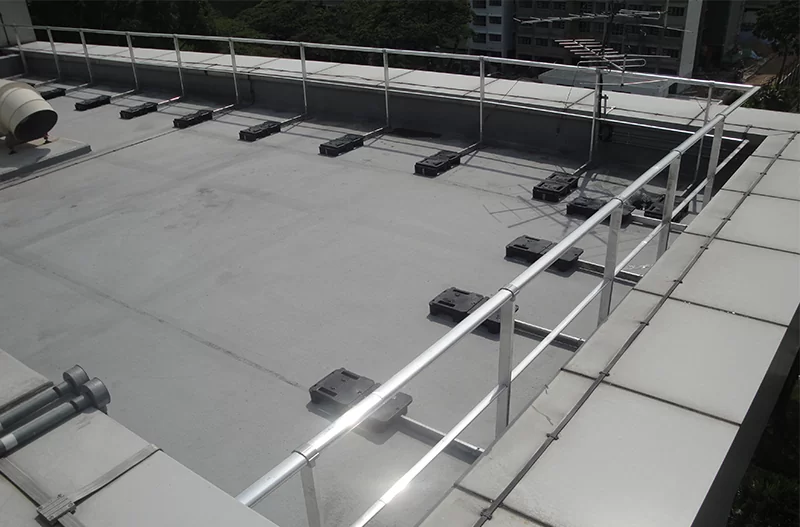Understanding the Role of Guardrails in Road and Infrastructure Safety
Guardrails play a vital role in protecting motorists, pedestrians, and infrastructure by reducing the severity of accidents and preventing vehicles from veering off roads. In a country like the Philippines, where highways, bridges, and mountainous roads are constantly exposed to heavy traffic and unpredictable weather, the need for dependable guardrails cannot be overstated. These barriers are not only required on major expressways but also in industrial zones, residential developments, and commercial complexes to maintain safety standards. The Department of Public Works and Highways (DPWH) mandates strict compliance with safety regulations, ensuring that guardrail installations meet both national and international standards. A dependable guardrail supplier Philippines ensures that the products provided meet these criteria, offering peace of mind to developers and project managers. Properly installed guardrails significantly reduce vehicle collision impact, preventing severe damage and potential fatalities. By understanding how these safety structures function, stakeholders can prioritize sourcing high-quality materials and professional installation.
Key Qualities to Look for in a Guardrail Supplier Philippines
Choosing the right guardrail supplier Philippines requires careful evaluation of several critical factors. First and foremost, ensure that the supplier strictly adheres to DPWH regulations and internationally recognized safety standards. This guarantees that the guardrails meet essential specifications for durability and strength. Next, review the supplier’s product range. A reputable supplier should offer a variety of guardrail options, such as W-beam, thrie-beam, stainless steel, and hot-dip galvanized guardrails. Customization is also essential, as projects often require specific sizes, coatings, or finishes to match the site’s environmental and aesthetic demands. Reliable suppliers also provide excellent logistics support, ensuring timely delivery to keep projects on schedule. Customer service should not be overlooked; a supplier that offers clear communication and technical support can save valuable time and resources. Lastly, verify the supplier’s reputation through client testimonials and completed projects to ensure consistent product quality.
Materials and Technology That Enhance Durability
Durability is a non-negotiable factor when selecting guardrails for Philippine infrastructure. The country’s tropical climate, which includes high humidity and frequent typhoons, demands materials that can withstand corrosion and rust. Hot-dip galvanized steel is often the top choice due to its exceptional resistance to environmental damage, ensuring a longer lifespan and lower maintenance costs. Advanced coating technologies further improve corrosion protection, while innovations in crash barrier engineering enhance impact absorption during accidents. Some suppliers offer guardrails with added features such as anti-glare coatings or reflective elements for improved visibility at night. Sustainable material options are also emerging, catering to projects that prioritize environmental responsibility. When evaluating a guardrail supplier Philippines, inquire about the materials and technologies they use to guarantee product reliability and compliance with safety standards. Investing in high-quality materials ensures the guardrails will perform effectively for many years, even in challenging conditions.
How to Evaluate a Guardrail Supplier’s Track Record
A supplier’s track record is a strong indicator of reliability and quality. Begin by verifying their certifications, licenses, and affiliations with industry organizations. These credentials demonstrate compliance with Philippine regulations and international safety standards. Reviewing a supplier’s project portfolio provides valuable insights into their experience and capabilities. Look for completed installations across different environments such as highways, industrial sites, and residential projects to gauge versatility. Customer feedback also plays a critical role; positive reviews reflect consistent service and high-quality products. Consider the supplier’s after-sales service as well. A dependable guardrail supplier Philippines will provide ongoing support, including maintenance advice and replacement services when necessary. Assess how long the company has been in operation, as established suppliers often have more robust systems for quality control and logistics. Thorough evaluation of these factors ensures you partner with a supplier capable of meeting your project’s safety and performance requirements.
Cost Considerations Without Compromising Safety
While budget is always an important factor, safety and durability should never be sacrificed to cut costs. The pricing of guardrails typically depends on the material grade, thickness, and complexity of installation. Hot-dip galvanized guardrails may carry a higher initial cost but offer superior longevity and lower maintenance expenses over time. To ensure a fair deal, request detailed quotations from multiple suppliers, allowing you to compare prices based on material specifications and additional services. Reliable suppliers will provide transparent pricing and explain factors that influence cost.
Key factors affecting guardrail pricing include:
- Type of guardrail (W-beam, thrie-beam, or stainless steel)
- Material thickness and coating quality
- Quantity and size of orders
- Delivery location and logistics requirements
- Installation complexity and additional services
Choosing a guardrail supplier Philippines that offers competitive rates while maintaining product integrity ensures your investment delivers long-term value. Proper financial planning, paired with an emphasis on quality, helps prevent costly repairs or replacements in the future.
Top Questions to Ask Potential Suppliers
Asking the right questions before finalizing a contract with a guardrail supplier Philippines can save you from costly mistakes. Start by inquiring about minimum order requirements and lead times to ensure they can meet your project schedule. Ask about warranty terms to understand how the supplier supports their products after installation. Maintenance services are another key area—determine whether they provide regular inspections or offer guidance on prolonging guardrail lifespan. Request details about available technical assistance during installation, as professional support can make a significant difference in quality and safety. Find out if the supplier provides customized solutions for unique project requirements, such as specific coatings or finishes. Clarify their shipping and delivery procedures, especially if your project site is in a remote location. By getting thorough answers to these questions, you’ll gain confidence in the supplier’s reliability and ability to meet your specific needs.
Notable Projects and Applications Across the Philippines
Guardrails supplied by trusted companies are used in a wide variety of projects across the Philippines. Major expressways and national highways feature these safety barriers to protect motorists traveling at high speeds. Industrial sites rely on guardrails to separate machinery areas and ensure worker safety. Residential developments often install guardrails along steep driveways or near elevated gardens to prevent accidents. Commercial properties, such as shopping malls and parking facilities, incorporate guardrails to guide traffic flow and prevent vehicle collisions. Even public parks and pedestrian walkways benefit from strategically placed guardrails that enhance safety and organization. These diverse applications demonstrate how a dependable guardrail supplier Philippines can meet different needs, whether for government infrastructure or private developments. Highlighting these successful uses can help property owners and contractors visualize how guardrails can be integrated into their own projects.
Installation Best Practices for Maximum Performance
Proper installation is as important as selecting the right guardrail. Before beginning, thorough site preparation ensures that the ground is stable and capable of supporting the guardrail structure. Professional installation teams use precise measurements and anchoring techniques to achieve the best fit and performance. Correct spacing and alignment are crucial to ensure that the guardrail can absorb impact effectively. Regular inspections after installation are recommended to maintain safety standards and identify any signs of wear or damage early. Periodic maintenance, such as tightening bolts and checking for corrosion, can extend the lifespan of the guardrails significantly. A reputable guardrail supplier Philippines often provides guidance or even hands-on assistance to guarantee that installations meet industry standards. By following these best practices, developers and property owners can ensure that guardrails remain functional and dependable for many years.
Frequently Asked Questions (FAQ)
What is the standard size of a W-beam guardrail in the Philippines?
The typical size is about 3 meters in length with a height of 750 mm, though customization is possible.
How long does a galvanized guardrail typically last in tropical conditions?
With proper maintenance, a galvanized guardrail can last 15 to 20 years or more, even in humid and coastal areas.
Can guardrails be repainted or recoated for aesthetic purposes?
Yes, they can be repainted or recoated as long as the process does not compromise the protective zinc layer.
Are there eco-friendly guardrail options available?
Some suppliers now offer sustainable materials or coatings designed to minimize environmental impact.
How soon can a supplier fulfill a large-scale order?
Lead times vary but typically range from a few weeks to a couple of months, depending on order size and customization.
Takeaway
Choosing the right guardrail supplier Philippines is a critical decision that directly impacts the safety and durability of any infrastructure project. By focusing on quality materials, proven supplier track records, and proper installation practices, developers and property owners can create safer environments for motorists and pedestrians alike. Carefully evaluating costs, asking the right questions, and understanding the unique environmental challenges of the Philippines ensures a successful guardrail installation that stands the test of time.










